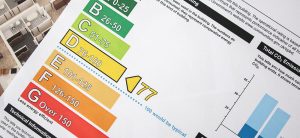 01254 774943
01254 774943  01254 774943
01254 774943 An EPC is based on elements including the building materials, its air-tightness and the building services installed. The types of heating, cooling and hot water services, for example, and the lighting and lighting controls, plus any renewable energy systems or low-to-zero-carbon technologies also come into consideration. Some of which have more influence on the EPC rating than others.
All energy performance certificates (EPCs) are rated using the same, standardised rating method known as ‘SAP’ (Standard Assessment Procedure). Each band, A-G, is broken down into SAP rating points, with the most amount of SAP points being a grade A rating, and the least being graded G.

A poor EPC rating suggests low energy efficiency, which makes the energy bills of that property more expensive. Prospective tenants may be therefore less likely to consider properties with a low EPC rating due to the cost, particularly since rising energy prices are an ever growing issue.
Furthermore, laws surrounding EPC’s are changing. From April 2018, the legislative changes will make it unlawful to let residential or commercial properties with the lowest 2 grades of energy efficiency, an EPC rating of F or G. For commercial buildings, failure to comply will result in a fine of 12.5% of the rateable value of the building, with a minimum charge of £500 and a maximum charge of £5000 being in place. Thankfully, we’ve created a cost-effective solution to tackling unlettable properties. Find out more about our MEES report service, here.
To discover more about EPCs or to find out how we can help you improve your property’s current energy efficiency rating, contact our team of experts on 01254 774943 or email us directly.
